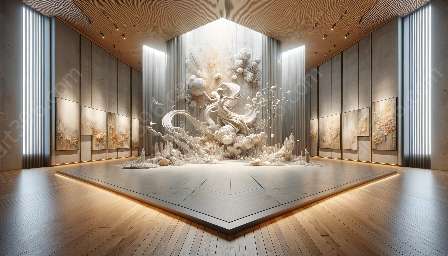Art installation conservation encompasses various processes and practices aimed at preserving and maintaining the integrity of art installations for future generations. Documentation and research play pivotal roles in this field, as they provide essential insights into the history, condition, and significance of art installations, guiding conservation efforts and contributing to the overall understanding and appreciation of these cultural artifacts.
The Significance of Art Installations
Art installations are dynamic, immersive artworks that often exist within specific contexts or environments, challenging traditional notions of artistic display and engaging viewers on multiple sensory levels. They can encompass a range of media, including sculpture, video, sound, and performance, and are often site-specific, integrating with the space in which they are exhibited. As such, art installations pose unique conservation challenges, requiring specialized approaches to documentation and research to ensure their long-term preservation.
Preservation and Conservation of Art Installations
Preserving and conserving art installations involves a multidisciplinary approach that draws on expertise from fields such as art history, conservation science, and museology. Documentation and research are fundamental to this process, providing a comprehensive understanding of the artwork's materials, construction, and intended conceptual framework. By documenting the history of an art installation, including its creation, iterations, and previous exhibitions, conservators can gain valuable insights into its evolution and contextual significance, informing decisions about its conservation and display.
Documentation in Art Installation Conservation
Documentation involves the systematic recording of information related to art installations, encompassing various aspects such as visual documentation, historical research, and condition assessments. Visual documentation, including photography and imaging techniques, serves as a crucial tool for capturing the physical attributes of an art installation and monitoring its condition over time. Historical research delves into the artist's intent, the work's exhibition history, and any alterations it may have undergone, shedding light on its evolution and meaning. Additionally, condition assessments provide vital data on the current state of the installation, identifying areas of deterioration or damage that require conservation interventions.
Research in Art Installation Conservation
Research in art installation conservation involves in-depth inquiry into the materials, techniques, and environmental factors affecting the artwork's longevity. This may encompass scientific analysis, such as material identification and aging studies, to determine the composition and behavior of the installation's components. Furthermore, research extends to understanding the specific challenges posed by the installation's form and conceptual framework, informing tailored conservation strategies that respect the artist's original vision while safeguarding the artwork for future audiences.
Role of Documentation and Research in Conservation Decision-Making
The information gathered through documentation and research serves as the foundation for conservation decision-making, guiding professionals in devising appropriate strategies to preserve art installations. By establishing a comprehensive record of an artwork's history, materials, and condition, conservators can devise targeted conservation treatments, preventive maintenance plans, and display guidelines that address the unique needs of each installation. Furthermore, ongoing research informs conservation best practices, enabling professionals to adapt their methodologies in response to emerging technologies and evolving standards.
Challenges and Innovations in Documentation and Research
Documentation and research in art installation conservation are not without challenges, as the dynamic nature of installations and their diverse materials demand adaptable documentation and research methodologies. Innovations in imaging technologies, such as 3D scanning and multispectral imaging, offer promising avenues for enhancing documentation accuracy and detail, facilitating the thorough examination and understanding of complex installations. Furthermore, interdisciplinary collaborations and knowledge-sharing initiatives play a vital role in advancing conservation research, fostering a collective understanding of best practices and facilitating the exchange of expertise within the field.
Conclusion
The field of documentation and research in art installation conservation is integral to the preservation and understanding of these dynamic and conceptually rich artworks. By documenting the history, condition, and artistic intent of art installations and conducting comprehensive research into their materials and preservation needs, conservation professionals contribute to the safeguarding of cultural heritage for future generations. As technologies and methodologies continue to evolve, the collaborative efforts of interdisciplinary teams and the commitment to ongoing research ensure that art installations will endure as vital components of our cultural landscape.

